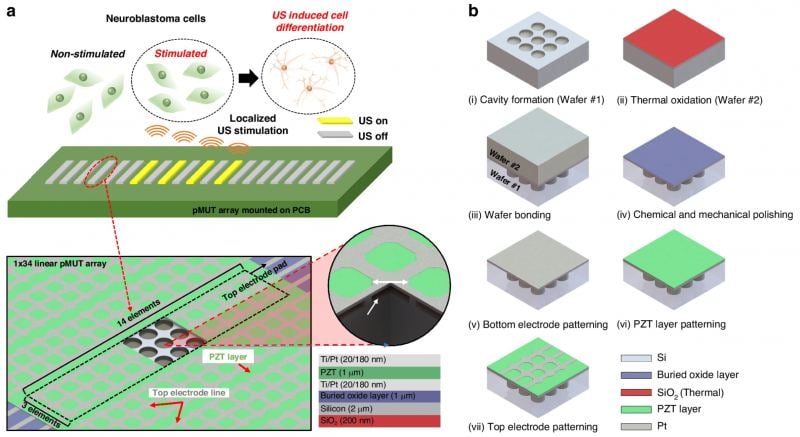Scientists have created microscopic robots that could revolutionize treatments for brain diseases by delivering stem cells to precise locations in the brain and stimulating them to grow into neurons—potentially opening a new frontier in treating conditions like Parkinson’s and Alzheimer’s.
The breakthrough technology, published in the journal Microsystems & Nanoengineering, combines magnetic navigation with ultrasound stimulation to overcome two major challenges in stem cell therapy: getting cells exactly where they’re needed and encouraging them to develop into functioning brain cells.
“Our technology merges the precision of magnetic actuation with the non-invasive power of ultrasound to create a scalable platform for neural regeneration,” said Dr. Hongsoo Choi, the study’s corresponding author from Daegu Gyeongbuk Institute of Science and Technology.
The researchers created what they call “Cellbots”—human neuroblastoma cells loaded with magnetic nanoparticles that can be guided through tissue using external magnetic fields. Once delivered to the target location, a miniaturized ultrasound device activates the cells to develop into neurons.
What makes this approach groundbreaking is the precision of both systems working together. The magnetic particles allow researchers to steer cells with micrometer accuracy, while the custom-designed ultrasound transducer—just 1mm by 7mm in size—can stimulate specific cell clusters without affecting surrounding tissue.
The results are dramatic. Cells receiving 40 minutes of ultrasound treatment grew neural extensions nearly twice as long as unstimulated cells (119.9 micrometers versus 63.2 micrometers), indicating significantly enhanced neural development. When tested in laboratory experiments, the researchers successfully guided Cellbots to specific targets and selectively stimulated only those cells.
This dual-technology approach addresses a critical problem in current stem cell therapies for brain disorders. While stem cells hold promise for replacing damaged neurons, traditional implantation methods can’t precisely position cells or control their development, resulting in poor integration and function.
The miniaturized ultrasound technology represents a significant advance over conventional ultrasound systems, which are too large and lack the precision needed for targeted cell stimulation. The researchers designed a piezoelectric micromachined ultrasound transducer (pMUT) array with elements just 60 micrometers in diameter—roughly the width of a human hair.
“By achieving localized differentiation, we can now envision therapies where stem cells not only reach their target but also mature into functional neurons on demand,” Dr. Choi explained.
Beyond neurodegenerative diseases, the technology could potentially help stroke patients by rebuilding damaged neural circuits, and might even find applications in drug testing by creating more accurate neural tissue models in laboratories.
While the technology has yet to be tested in living animals or humans, it provides a powerful new approach to address the limitations of current stem cell therapies. The researchers are now working on optimizing the ultrasound parameters and scaling the system for eventual clinical applications.
For millions suffering from currently incurable neurodegenerative diseases, this micro-robotic approach offers a glimpse of potential treatments that could someday repair damaged brain circuits with unprecedented precision.
If our reporting has informed or inspired you, please consider making a donation. Every contribution, no matter the size, empowers us to continue delivering accurate, engaging, and trustworthy science and medical news. Independent journalism requires time, effort, and resources—your support ensures we can keep uncovering the stories that matter most to you.
Join us in making knowledge accessible and impactful. Thank you for standing with us!

